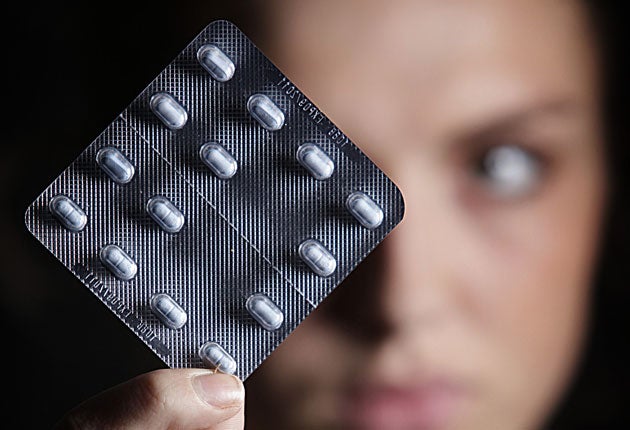Popularity of drugs like Xanax with young people has led to a rise in dangerous fake medicines
When we think about illicit drugs we tend to think of cocaine or heroin, but non-medical use of prescription drugs is growing, aided by the ease with which they can be sourced through the internet


Your support helps us to tell the story
From reproductive rights to climate change to Big Tech, The Independent is on the ground when the story is developing. Whether it's investigating the financials of Elon Musk's pro-Trump PAC or producing our latest documentary, 'The A Word', which shines a light on the American women fighting for reproductive rights, we know how important it is to parse out the facts from the messaging.
At such a critical moment in US history, we need reporters on the ground. Your donation allows us to keep sending journalists to speak to both sides of the story.
The Independent is trusted by Americans across the entire political spectrum. And unlike many other quality news outlets, we choose not to lock Americans out of our reporting and analysis with paywalls. We believe quality journalism should be available to everyone, paid for by those who can afford it.
Your support makes all the difference.One of the problems with issuing alerts about illicit drugs is that rather than being put off, some people will actively seek out these drugs. The latest alert follows several people requiring hospital admission having used fake medicines, that they thought was a drug like Xanax.
Toxicology reports suggest some of these fake tablets have higher than usual doses of benzodiazepine or no trace of benzodiazepine, but other harmful chemicals instead.
Unusually, this new alert doesn’t just suggest that people don’t buy these drugs, although that is included in the advice, but advises how they can reduce the chances of coming to harm. Tips like taking just a small amount and waiting to see what the effects are is one example. Sound as this advice is, it’s questionable whether it will reach its intended audience. While dependent users of drugs like these may well be in contact with services who can alert them to the dangers, it is unlikely young people who also use these fake medicines are.
The popularity of drugs like Xanax among young people has been helped by its association with artists like Lil Pump and Lil Peep. Not all young people will be influenced by these artists, but some will as they embrace not just the sound of the subculture but the drugs too. That’s the difficulty Public Health England faces, they are competing with the voices of rappers and hip-hop stars. It’s not even about who young people will listen to but whether they’re even tuned into any official messaging about drugs and these alerts about harm.
Drugs like these are attractive not just for the effects they have on their own, but the way they interact with other drugs like alcohol. Combining these chemicals creates the desired effect faster, but also amplifies the risks, particularly problems breathing, as both alcohol and Xanax depress breathing.
Some young men are known to goad each other on to see who can take the most of these drugs. Like the well-engrained pastime of seeing who is man or woman enough to hold their beer. The problem accelerates when both drugs are combined.
But using these fake medicines isn’t always about machismo – many use them to counter feelings of anxiety or depression. These drugs are a quick and effective way of mitigating these symptoms in the short-term. Some will have worked this out by chance, but others will have gleaned this from friends. Either way it’s an easy way to feel better and saves all the hassle and intrusive questioning that they know will be encountered from professional contact, even if they could get specialist help, which in the current climate is questionable.
When we think about illicit drugs we tend to think of cocaine or heroin, but non-medical use of prescription drugs like Xanax is growing, aided by the ease with which they can be sourced through the internet. They’re also cheap and, as some young people have found out to their cost, very potent.
Ideally there’d be a way of quality checking these products so that the potential for harm is reduced, but that’s unrealistic. So, we’re left with the current system where we wait until the harm is done and then try and warn as many young people as we can about the dangers. The equivalent of waiting until there are a few fatalities in a newly designed car before building in safety features.
I share the government’s aim of reducing demand for these drugs, but I don’t share the way they are trying to achieve this. Drug use is symptomatic of wider societal problems, such as anxiety and depression. Our young people are telling us something by using drugs like Xanax in increasing numbers – it’s a tragedy we’re not listening.
Ian Hamilton lectures in mental health at the Department of Health Sciences, University of York
Join our commenting forum
Join thought-provoking conversations, follow other Independent readers and see their replies
Comments